Steinway & Sons: to build the best piano possible
In the world of pianos, few names ring as bright as Steinway & Sons. In 1853, German Heinrich Engelhard Steinweg, then going by the name Henry E. Steinway, founded the company in New York. Since then, Steinway has been the reference for piano building. Piano's Maene is not only official dealer of the brand in Belgium and the Netherlands, but also restores and reconditions Steinway pianos. Therefore, we would like to further explain the company's history and the quality of its pianos here.
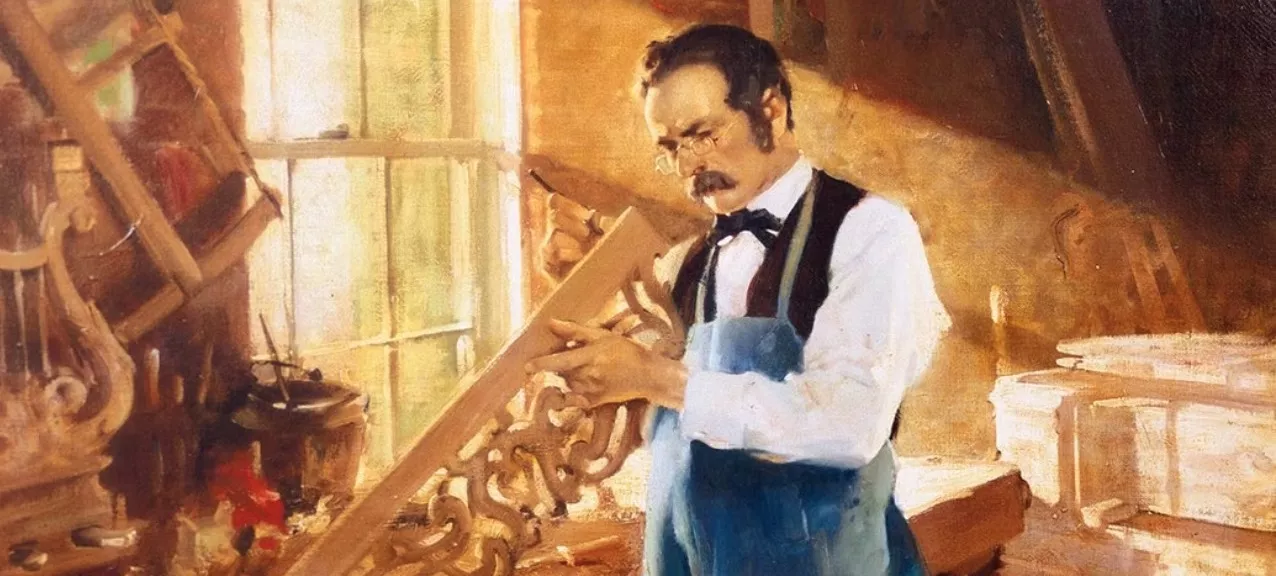
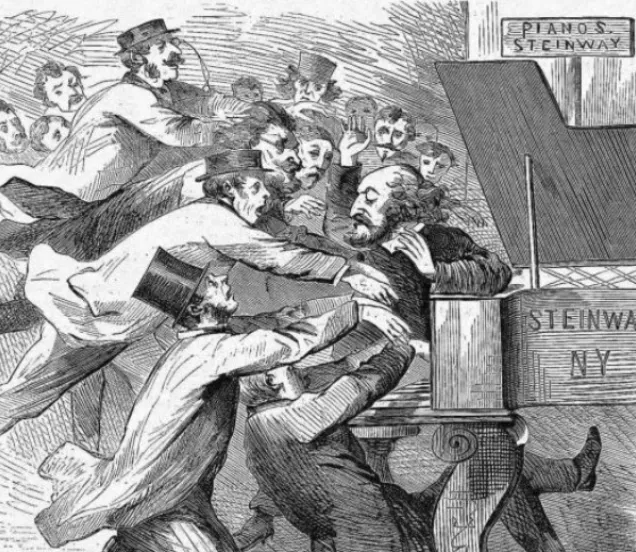
A short history
Henry Steinway grew up as the son of a cabinetmaker in Seesen, Germany. There, he was already building pianos under the name Steinweg. In 1850, he and seven of his nine sons emigrated to the United States because of the unsettled economic and political situation in his homeland. The eldest son C. F. Theodore continued building in Germany and established the Steinway factory in Hamburg in 1880. This allowed them to avoid the high import taxes and be closer to their European customer.
The first major international recognitions for Steinway came at the 1867 World Fairs in Paris and 1876 in Philadelphia. There it won gold medals each time. The modern piano as we know it today was born. In the following years, Steinway's success continued to grow despite socio-economic struggles. Steinway became purveyor to many monarchs, such as Queen Victoria, but also gained recognition from pianists such as Franz Liszt.
Despite the Great Depression in the 1930s and the bombings during World War II, production came back to full speed during the 20th century. Numerous legendary pianists, such as Vladimir Horowitz, Annie Fischer, Duke Ellington... associated themselves with the Steinway & Sons name and thus became ambassadors of the brand, the so-called Steinway Artists. Even today, pianists worldwide choose Steinway to give their best in concerts or competitions with one of the main examples being the Queen Elisabeth Competition.
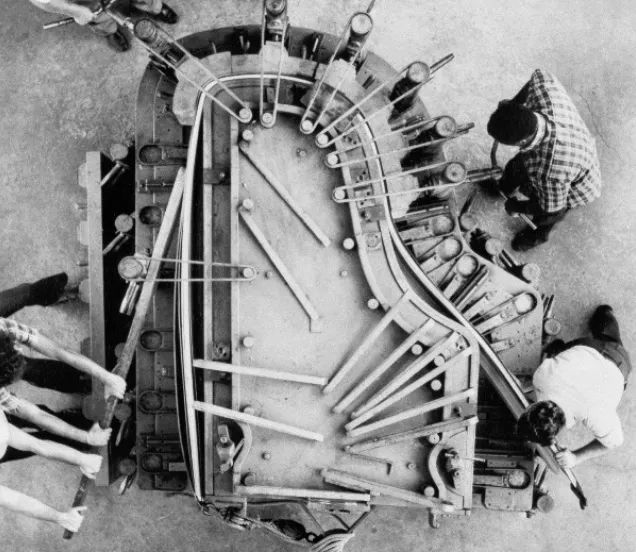
Unseen quality and innovation
The quality of a piano is determined by 3 factors: design, material and craftsmanship. Design is the basis from which everything starts. Since the company's inception, more than 140 patents have been registered in Steinway & Sons' name. Most of these were developed as early as the 2nd half of the 19th century. This is testament to the builder's vision for the future. Besides respecting tradition, they were also committed to innovation.
The development of the cast-iron frame made it possible to put much greater tension on the strings. This allowed the bass strings to be crossed over the strings in the middle register and treble. It was Steinway who popularised this cross-string principle. This piece of Steinway DNA is now part of every modern piano. One combines this principle with a diagonal orientation of the wood grains in the soundboard, allowing the sound to travel over a larger surface.
The Sitka spruce used for the soundboard is strictly selected and comes from North America. The microclimate there ensures wood of the highest possible quality. You can see this in the density of the growth rings.
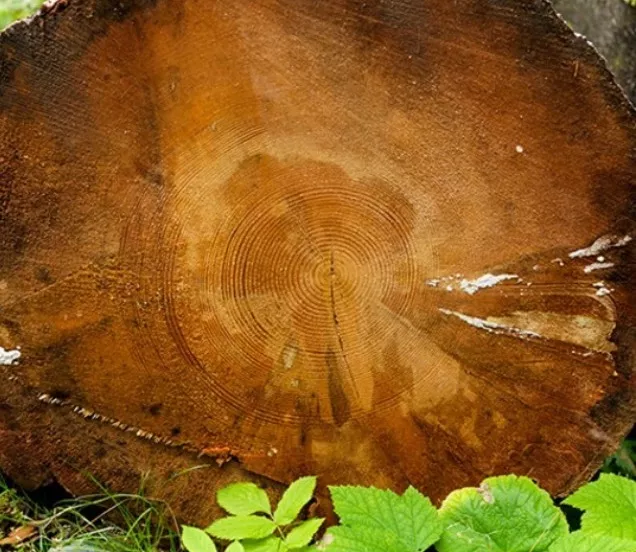
The use of the duplex scale provides an additional dimension of sound through the sympathetic resonance of the otherwise 'dead' ends of the strings.
Furthermore, Steinway uses a uniform inner and outer case to build their pianos.This is called continuous rim bending.This way, a minimum of sound energy is lost.
The sound waves are transmitted unhindered via the diaphragmatic soundboard to the case, which vibrates along with it.
The tuning block is also patented. The hexagrip pin block consists of 6 layers of hardwood. Successive layers of mahogany, beech and hard rock maple are glued together with the grain perpendicular to each other.This allows better fixation of the tuning pins, resulting in more stable tuning.
The vertically laminated bridge in turn ensures uninterrupted sound conduction from string to soundboard.
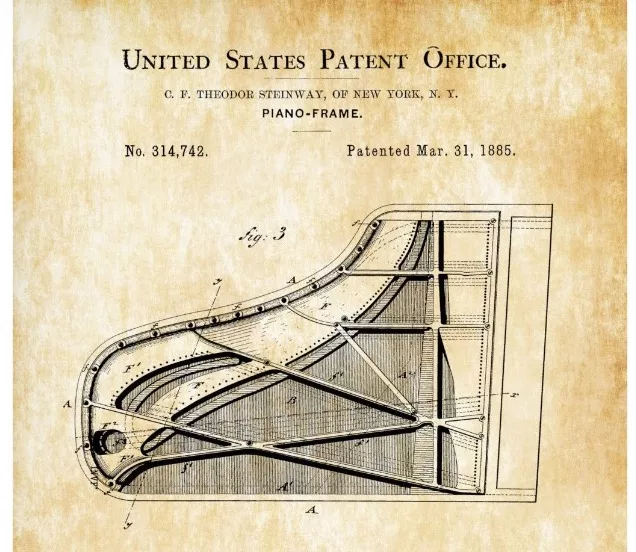
Over 140 patents
Helmholtz resonators, specially shaped openings in the piano's cast-iron frame, amplify specific frequencies for even better sound. Hermann von Helmholtz was a German physicist and mathematician.
With its combination of wood and metal, the tubular metal frame of the piano action contributes to the stability of the action and the best fixation of the hammers.
Moreover, the piano action and keyboard are produced by Renner and Kluge respectively. These 2 companies have been leaders in their respective fields for decades. To ensure that all suppliers meet Steinway's strict quality requirements, the piano maker has acquired these 2 German companies. Together with its own foundry for the frames, Steinway thus has a vertically integrated production and can continue to guarantee the quality of their instruments.
The sum of these elements, many of which are now incorporated into pianos from other brands, ensures that Steinway & Sons pianos are the benchmark for every other piano manufacturer. However, the combination of craftsmanship and experience, the design with its many patents and the carefully chosen materials make Steinway & Sons the preferred choice of concert halls and many a pianist.
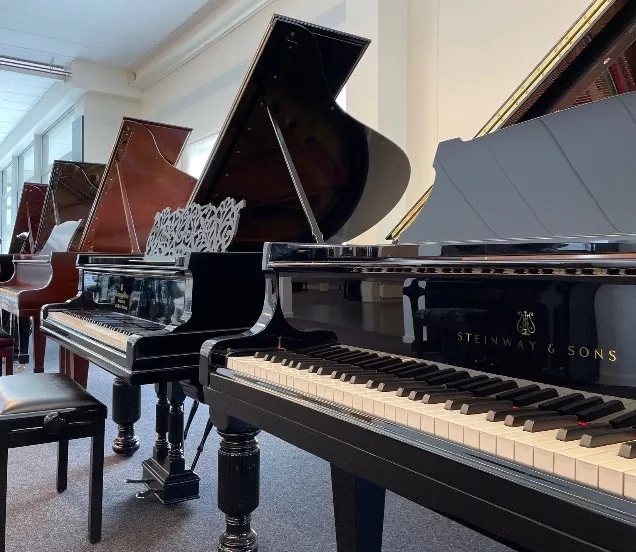
Durability and restoration
The combination of design, materials and craftsmanship not only ensures the finest sound and playing feel, but also durability across generations. Given that the design of the modern Steinway has changed little since 1890, this means that many parts from older pianos are still made and available today.
Restoring old Steinways is always worthwhile. Apart from being exclusive distributors, we are authorised restorers of these instruments. Depending on the age, use and maintenance of the instrument, overhaul of hammerheads and mechanics is desirable not to say necessary. Sometimes the piano needs to be restored, involving restoration of the soundboard and/or furniture, replacement of parts (tuning block, strings)... imposes itself. This is a very labour-intensive process, where we produce pieces ourselves or order them from Steinway Hamburg directly.
Older pianos can charm many people, not only because of their unique sound, but also because of their exceptional appearance and character. If you are looking for a piano, definitely give these gems a chance too.
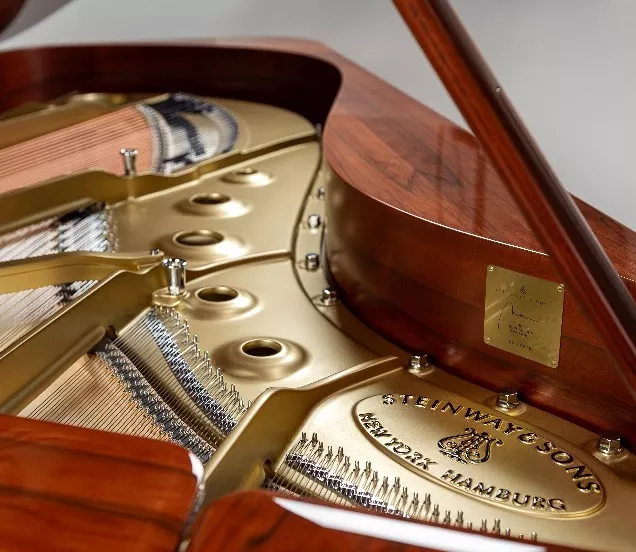
'To build the best piano possible'
With this blog, we hope to clarify why Steinway & Sons has been able to become the biggest name in the history of piano building. Since its inception, their motto has been 'To build the best piano possible'.
If you would like to experience the instruments up close, you are always welcome to visit one of our showrooms. During the company visits we organise several times a year, you can visit our workshop in addition to the instruments. There, one of our colleagues will explain everything about the construction of Steinway pianos and answer your pressing questions.

